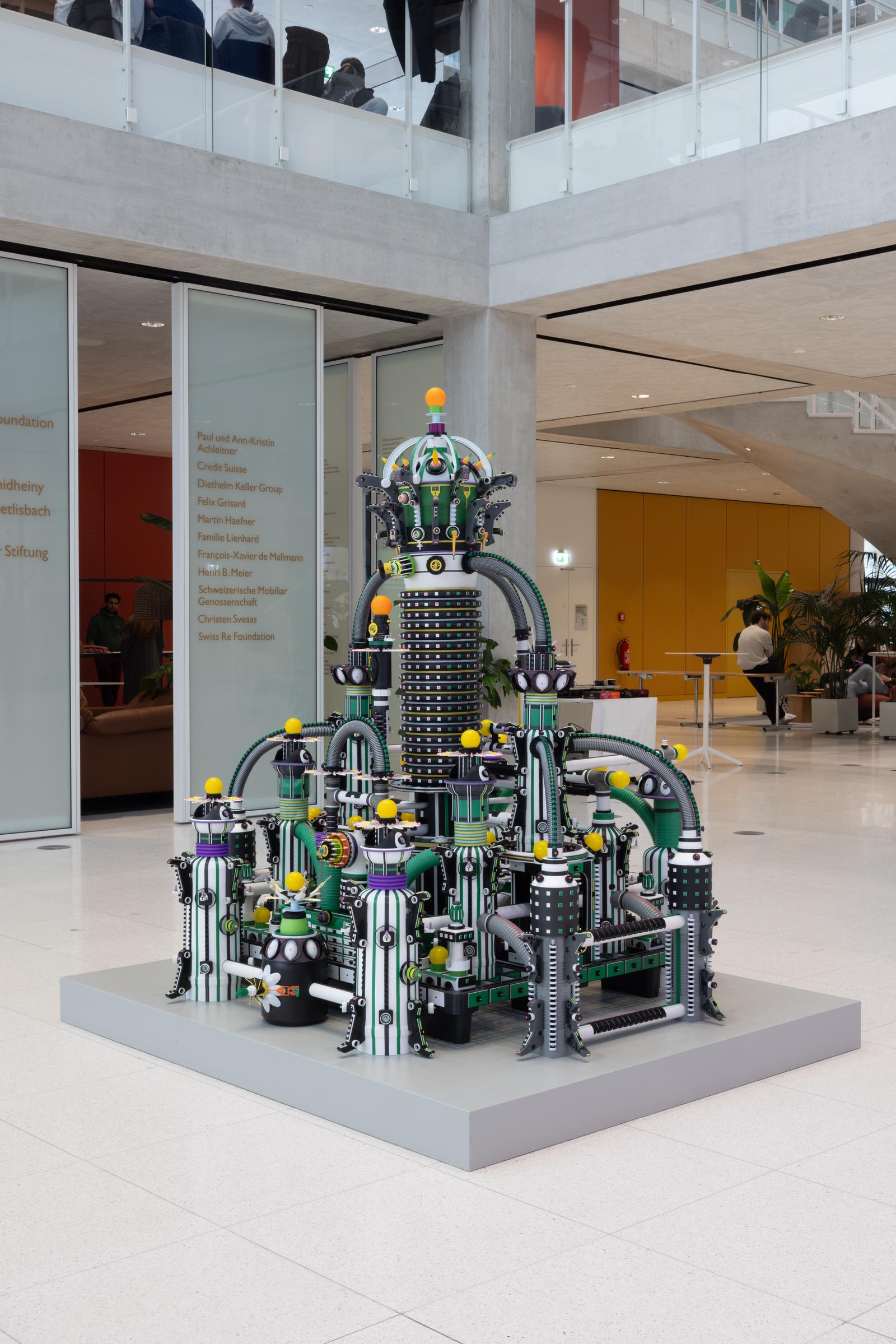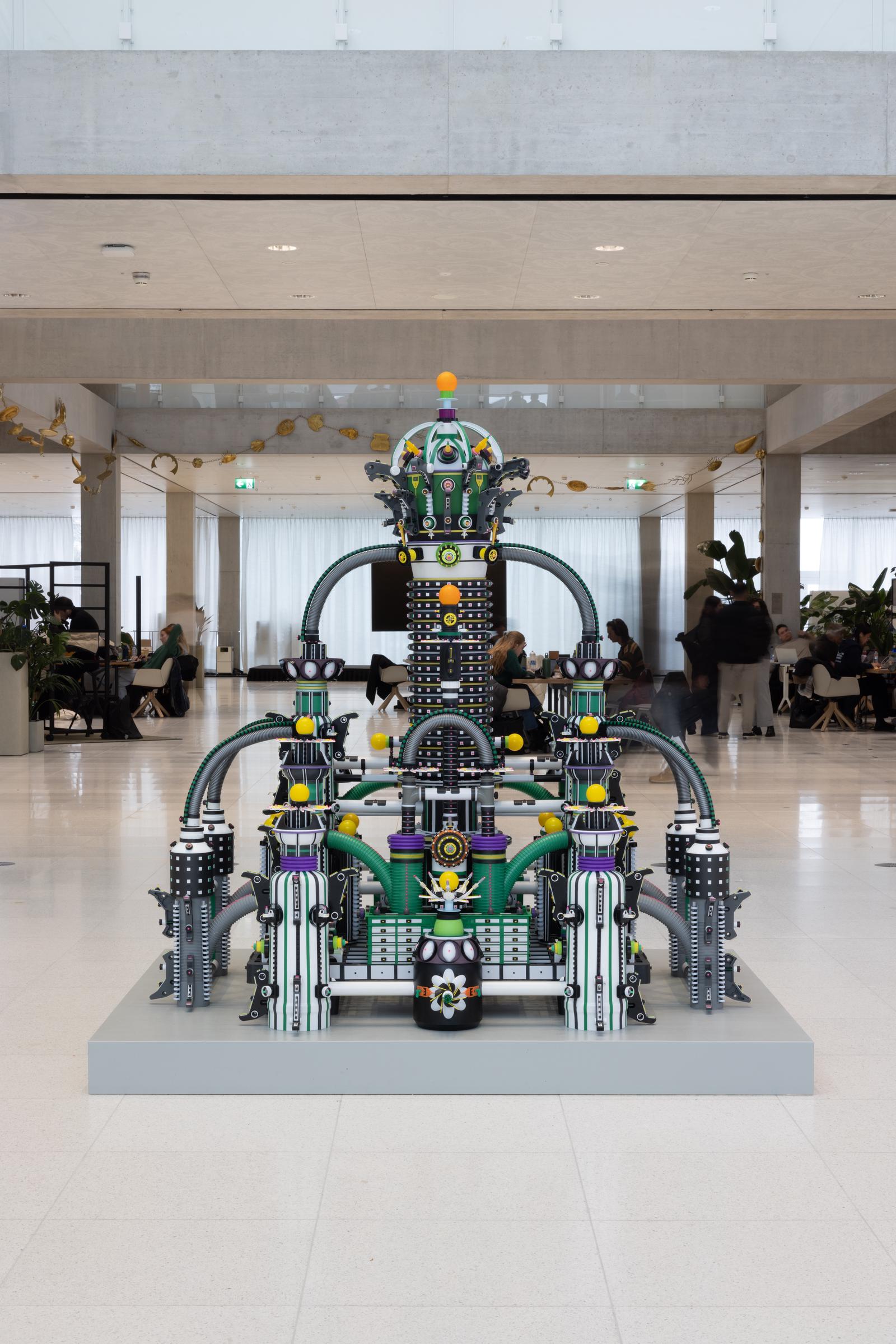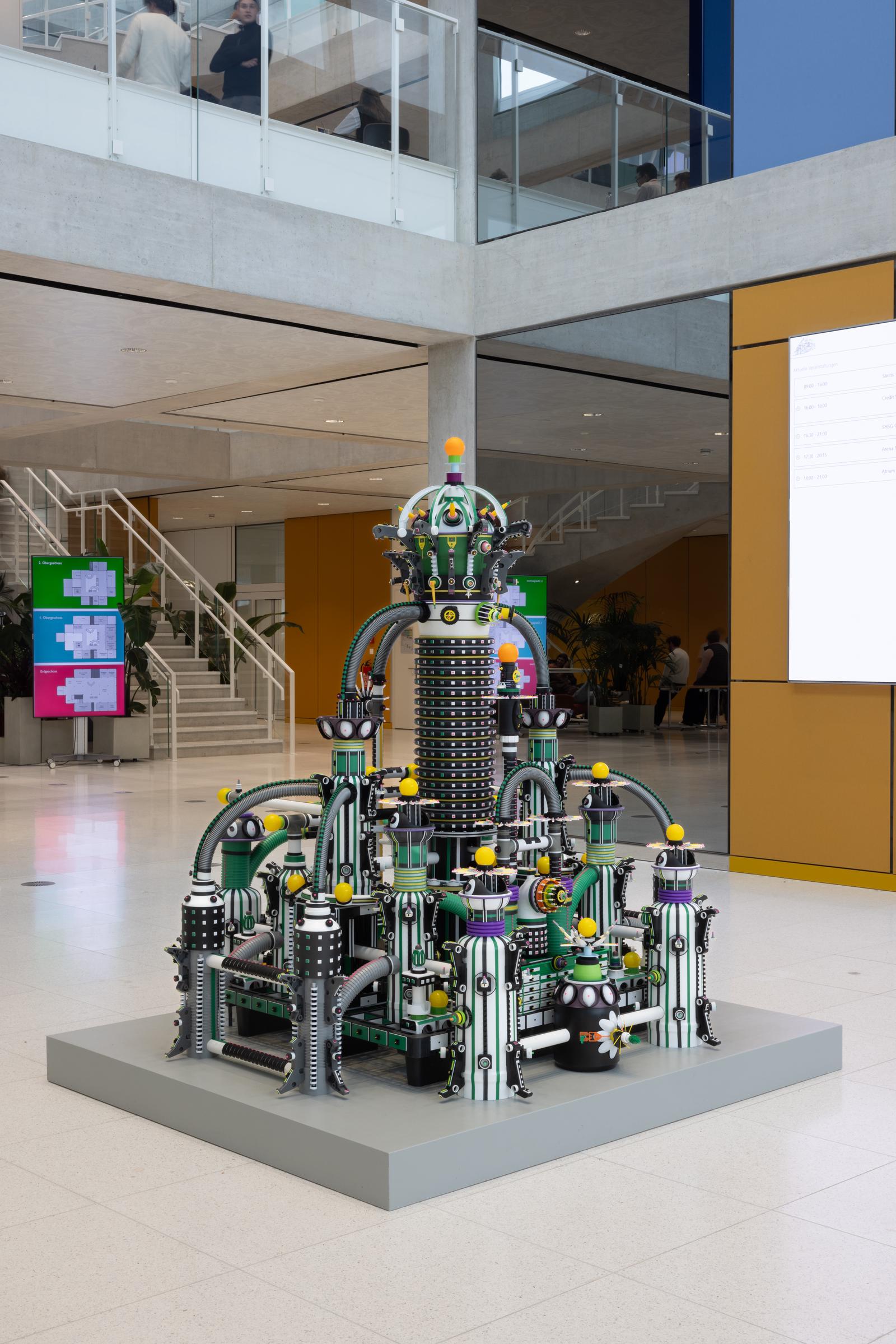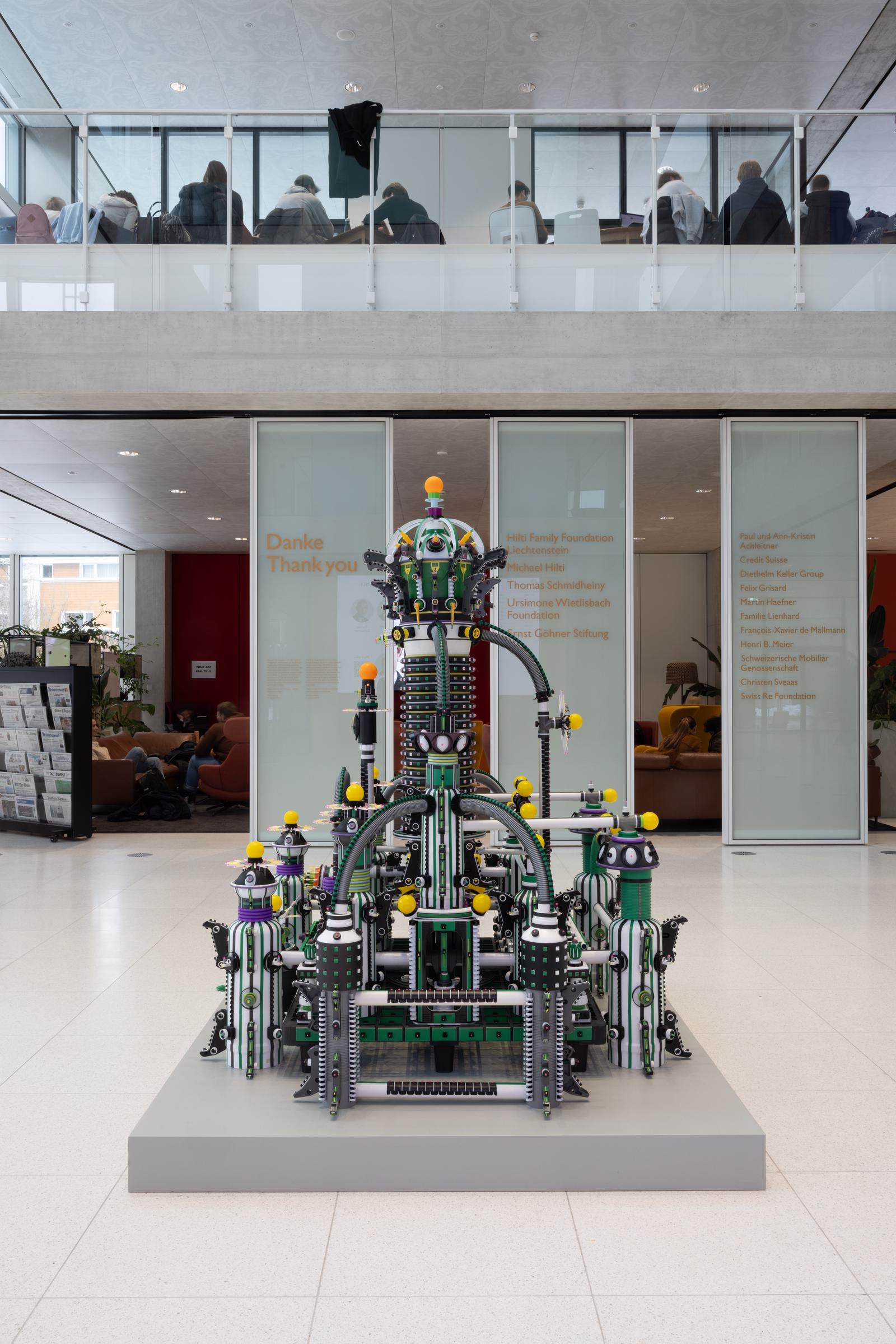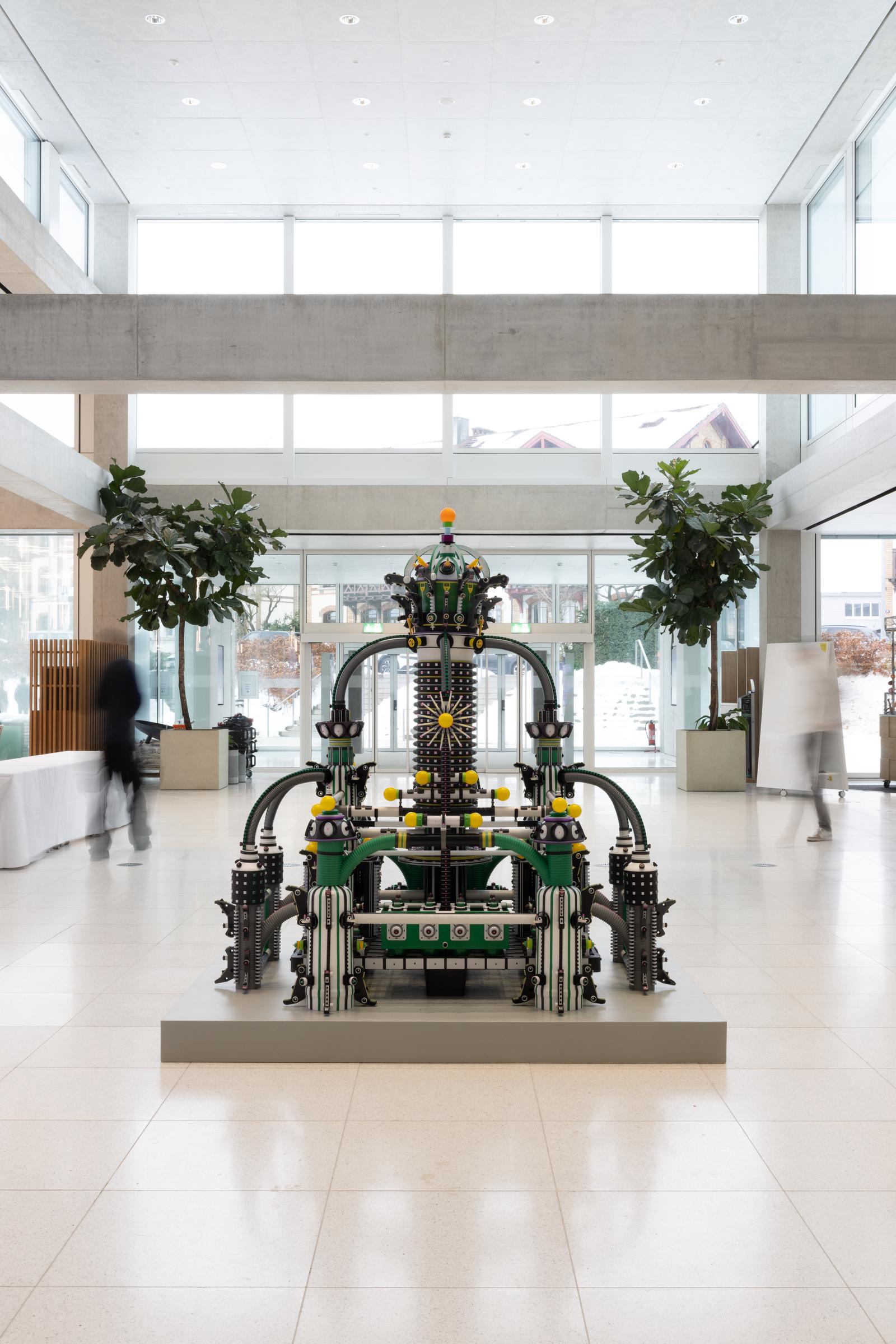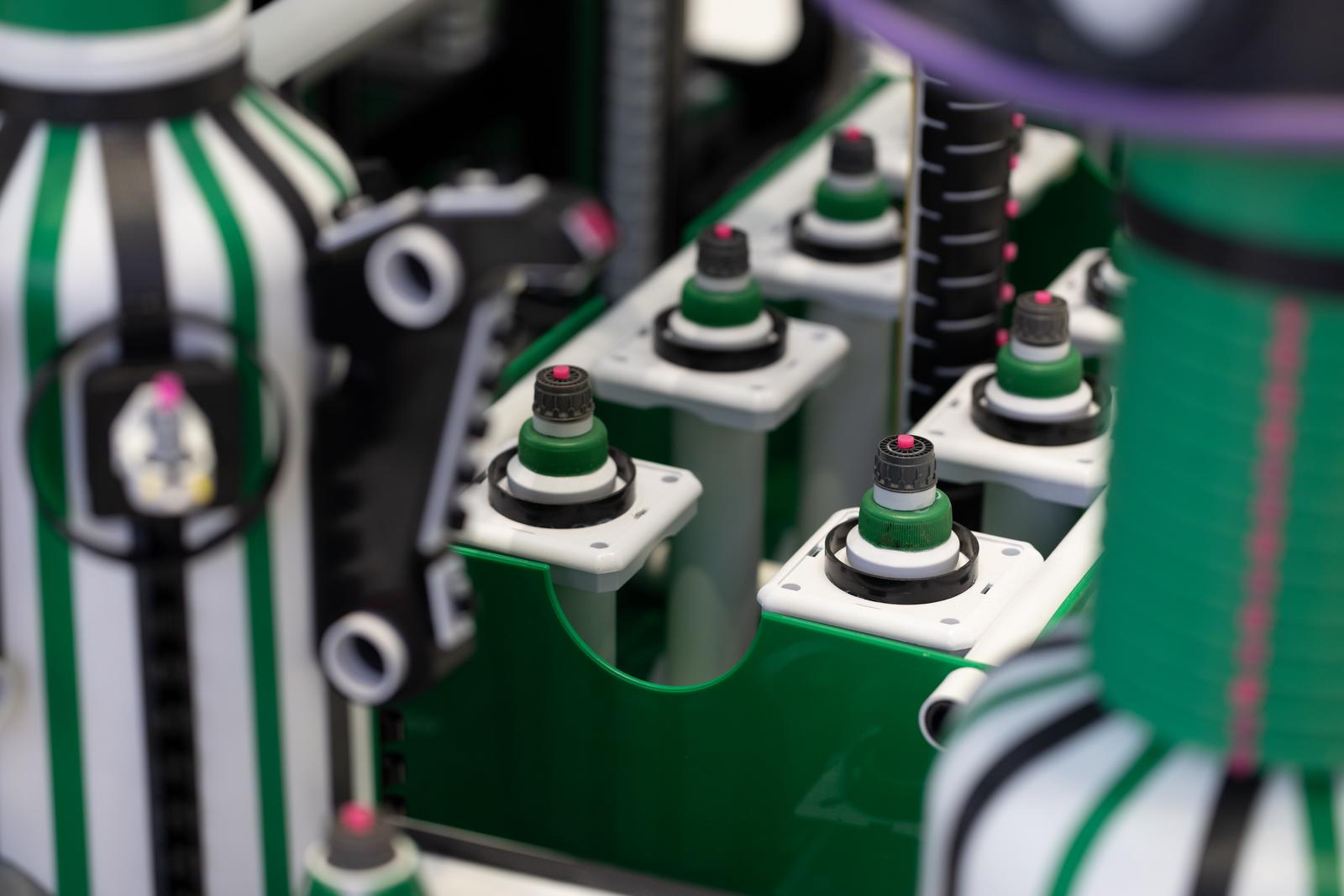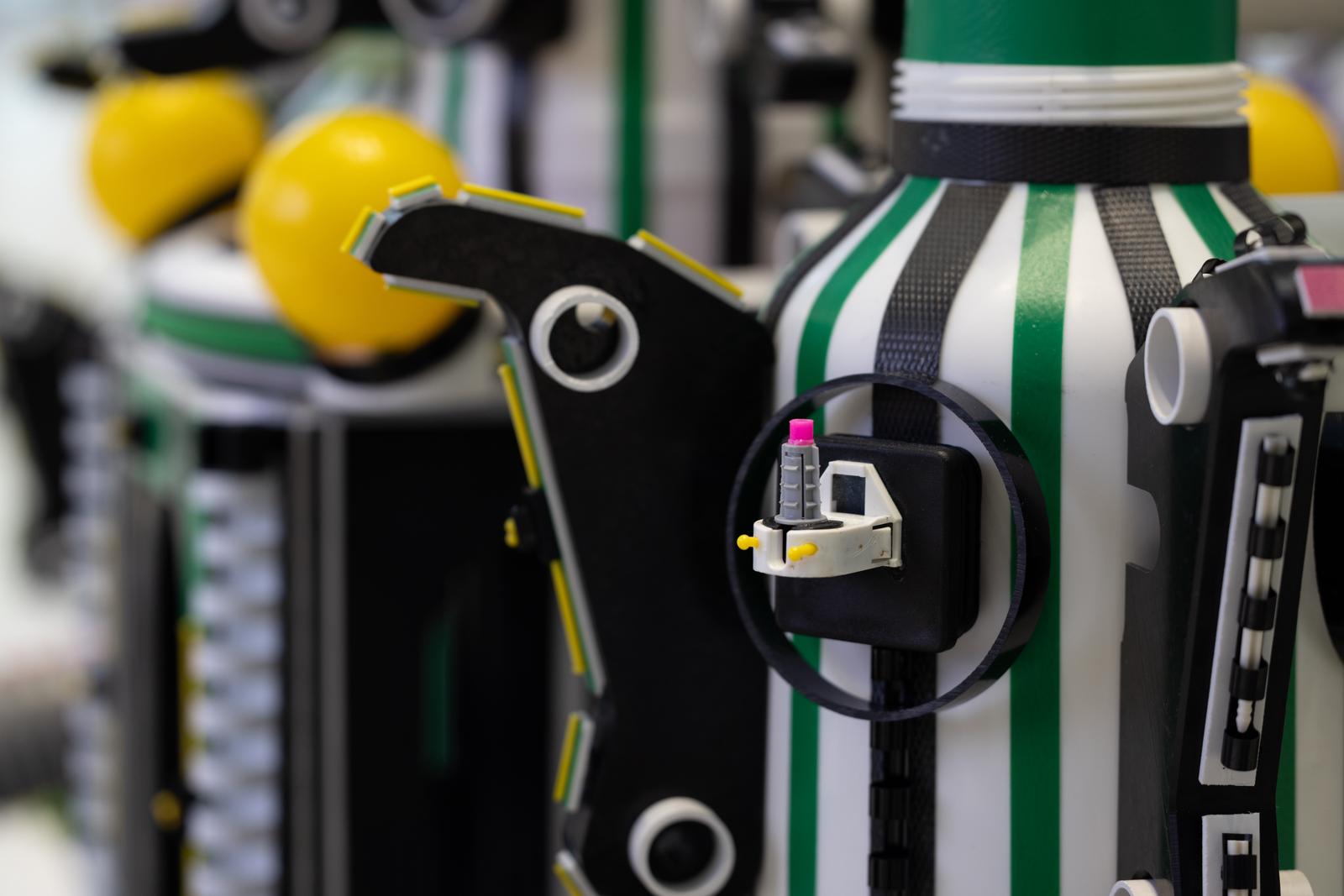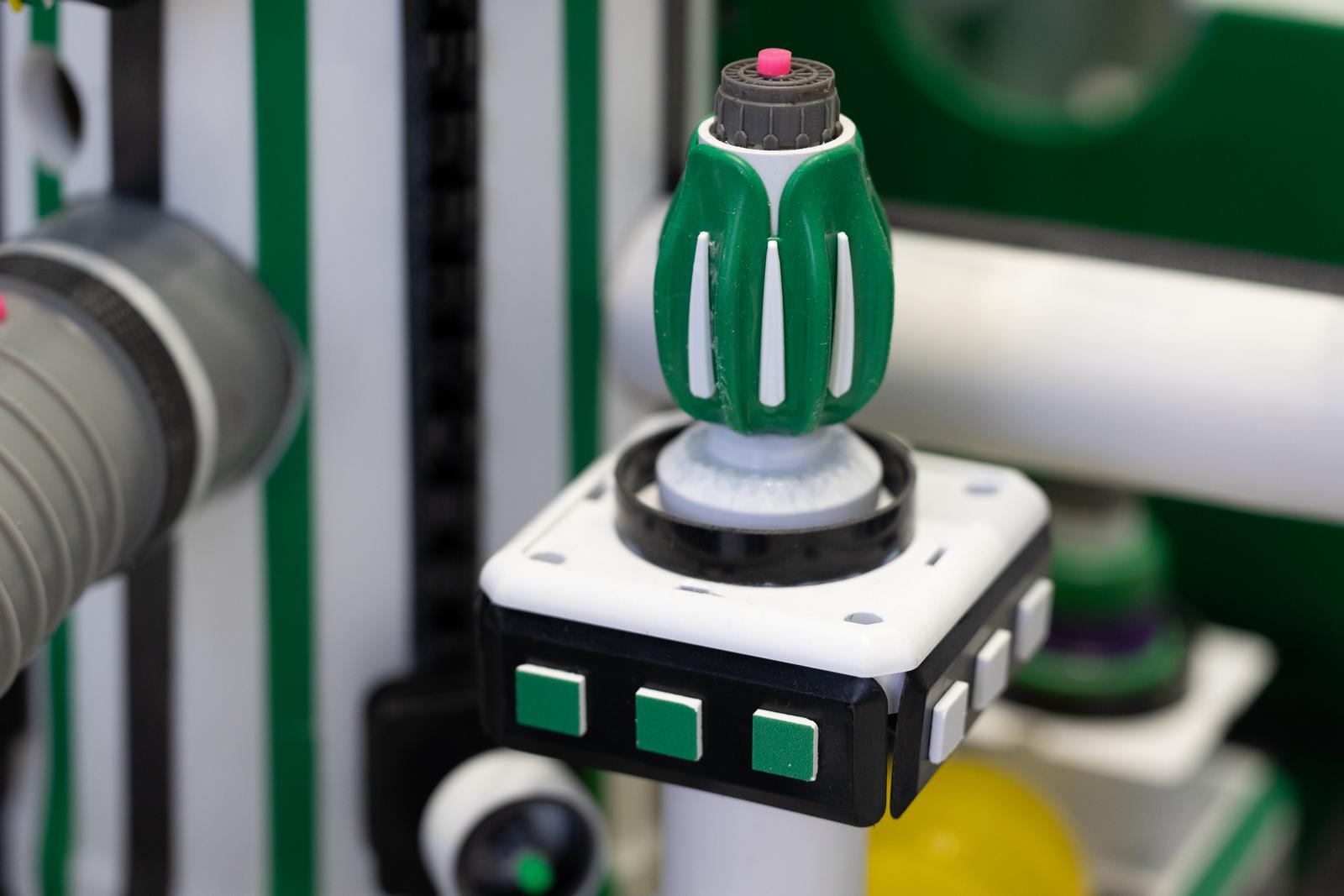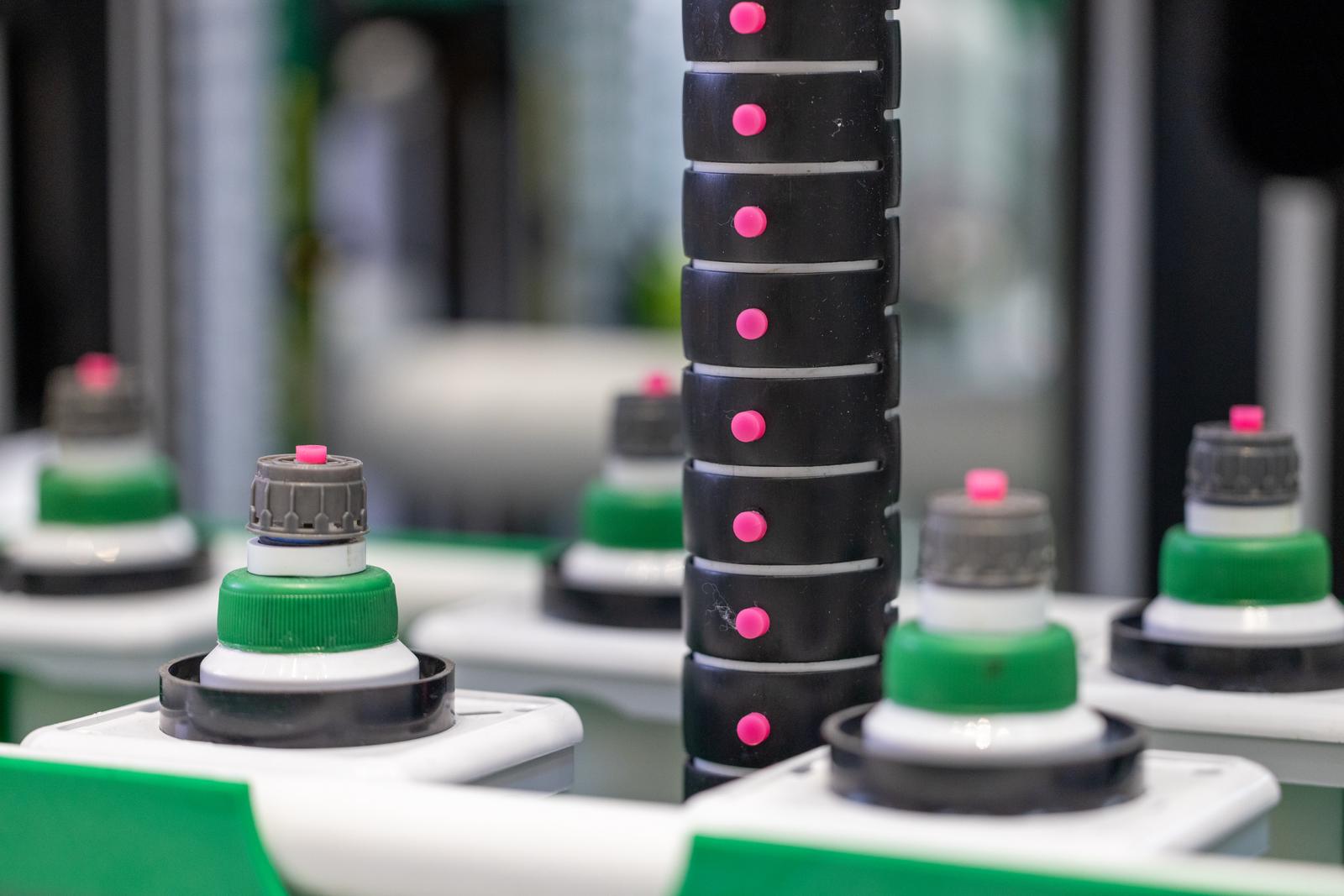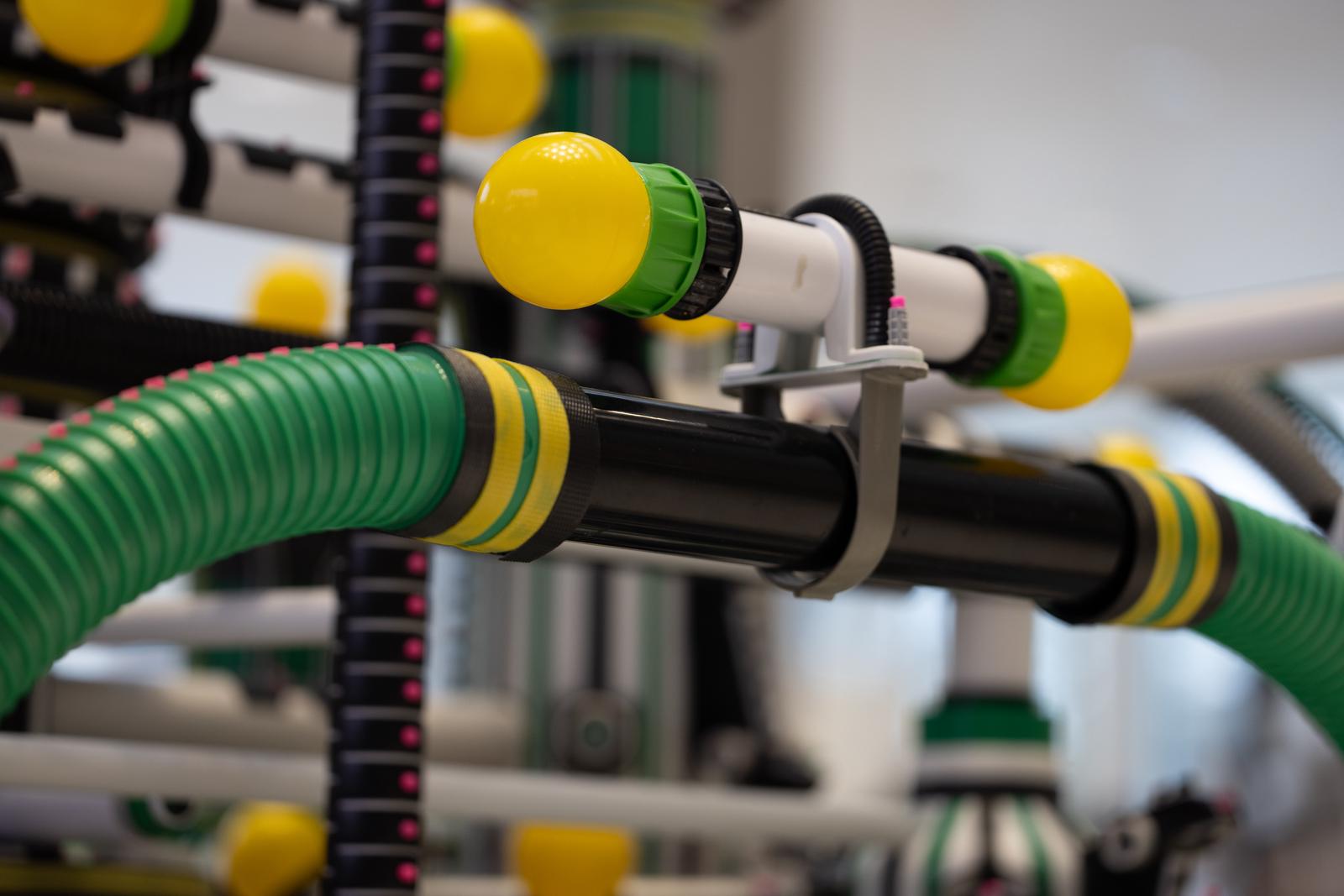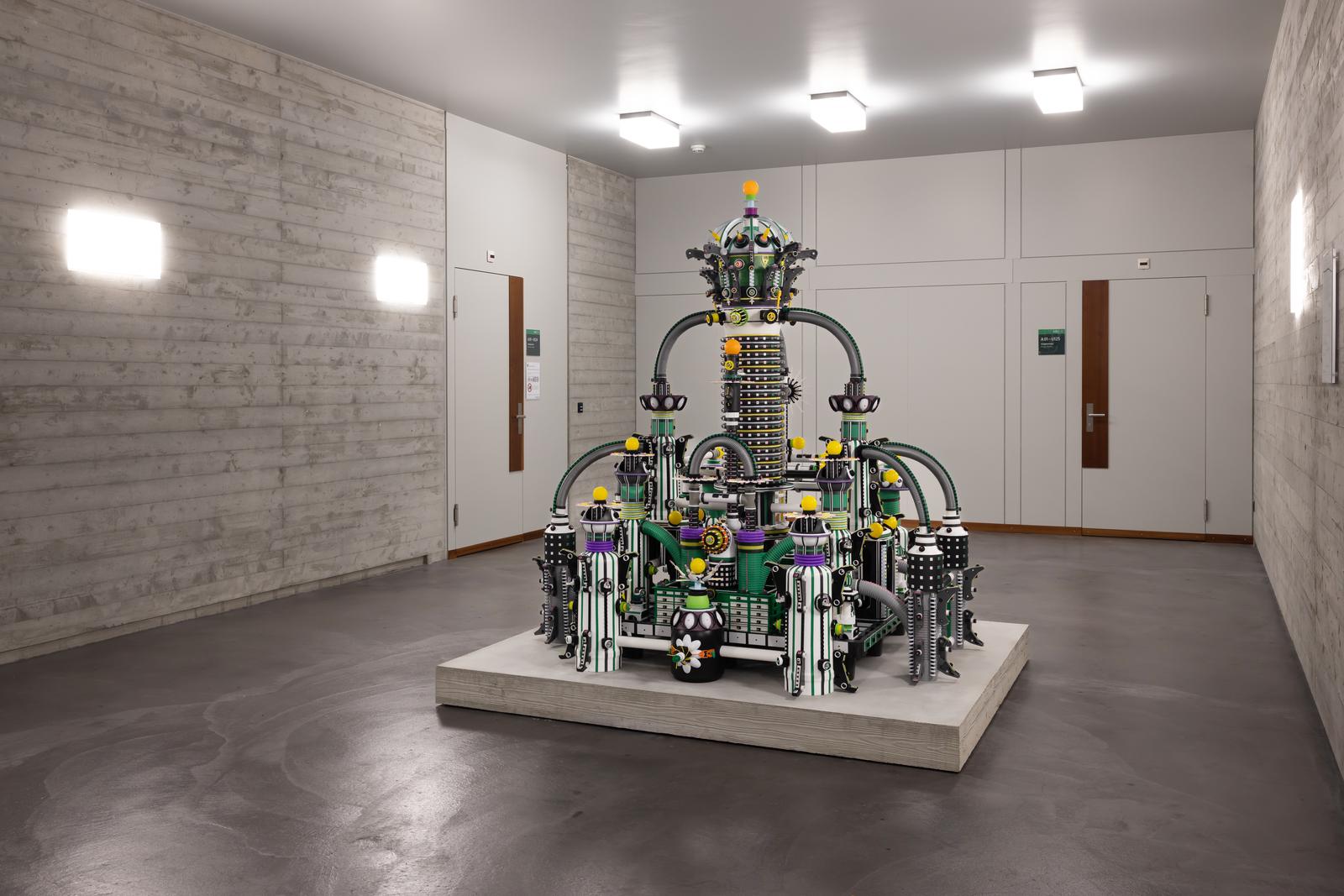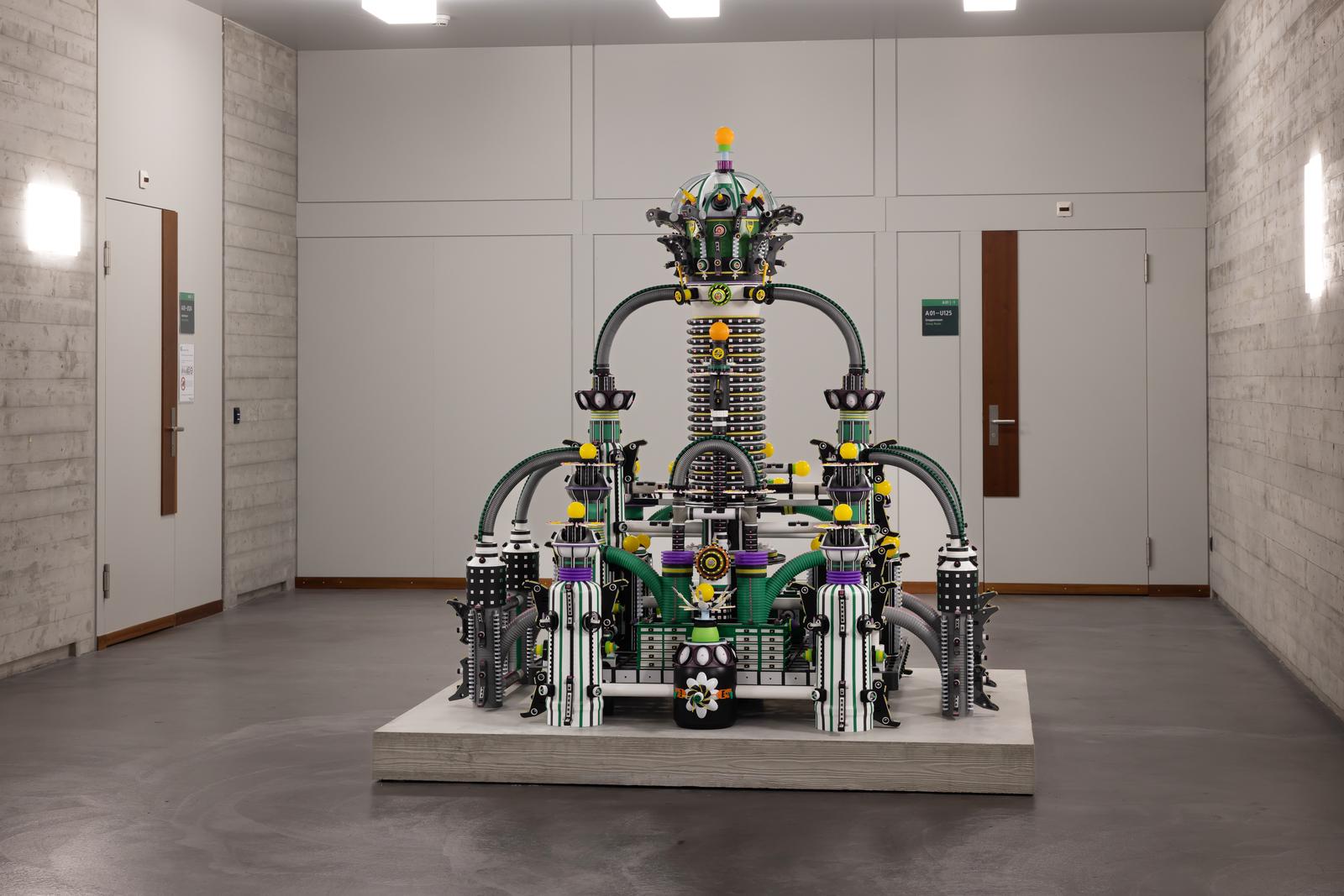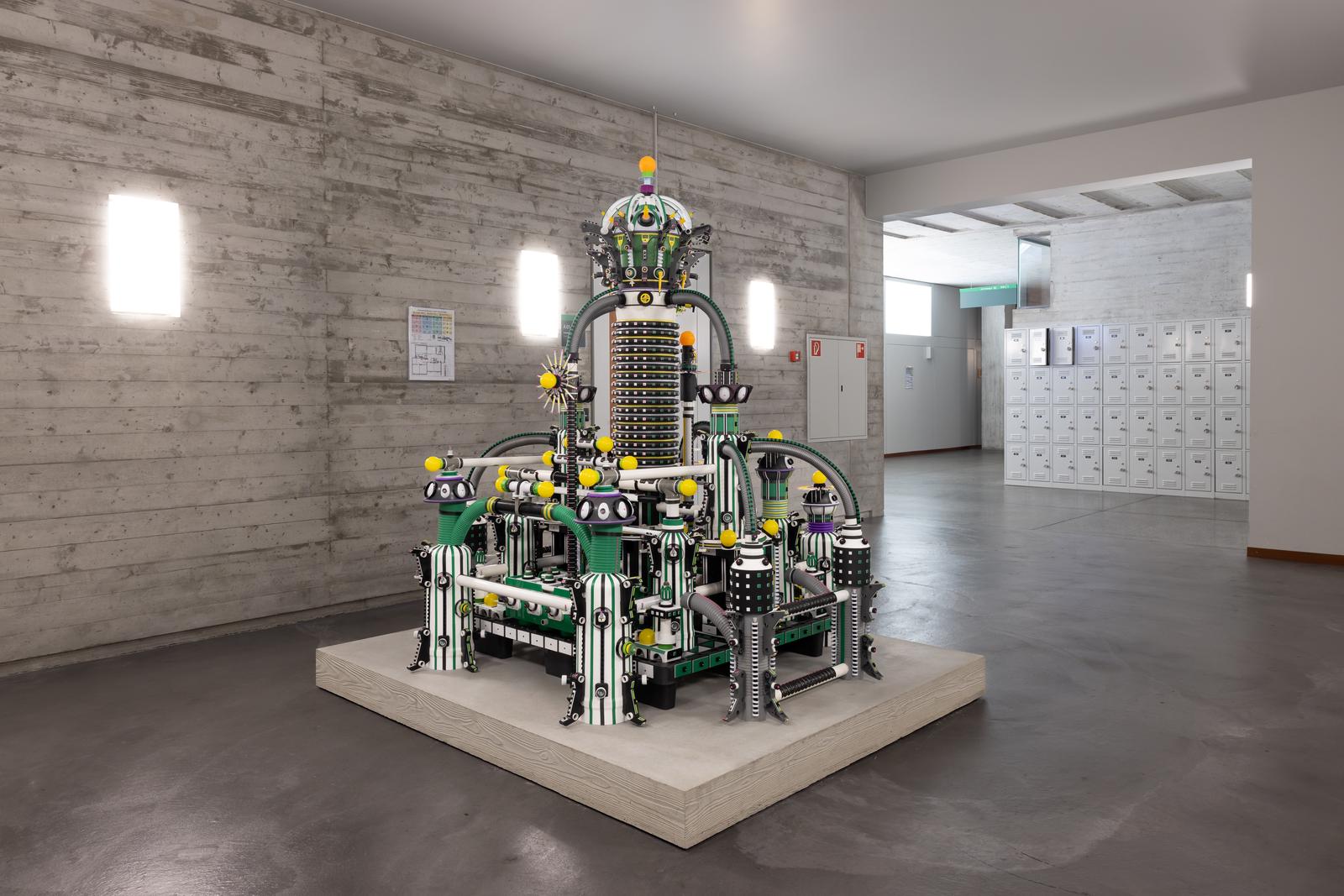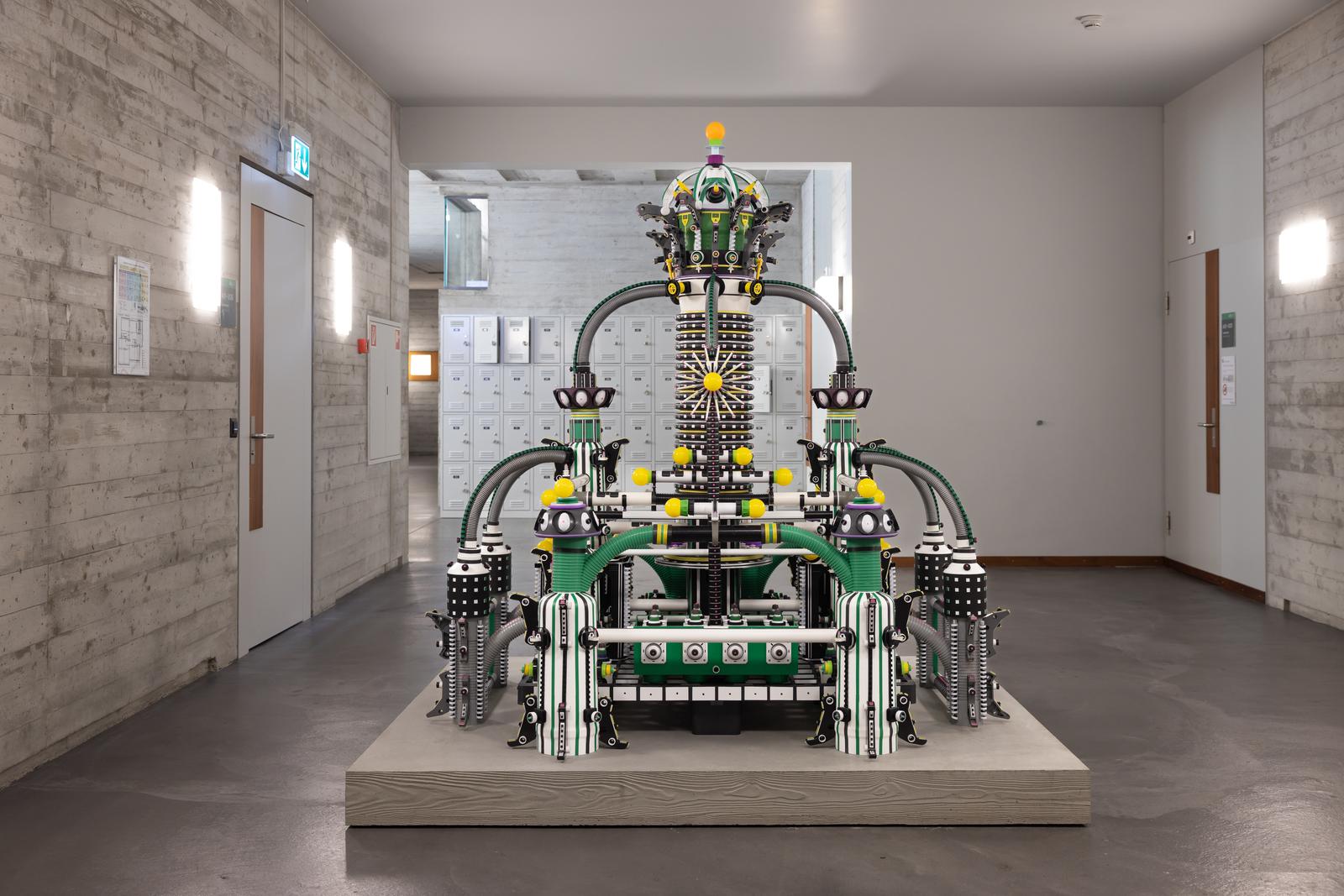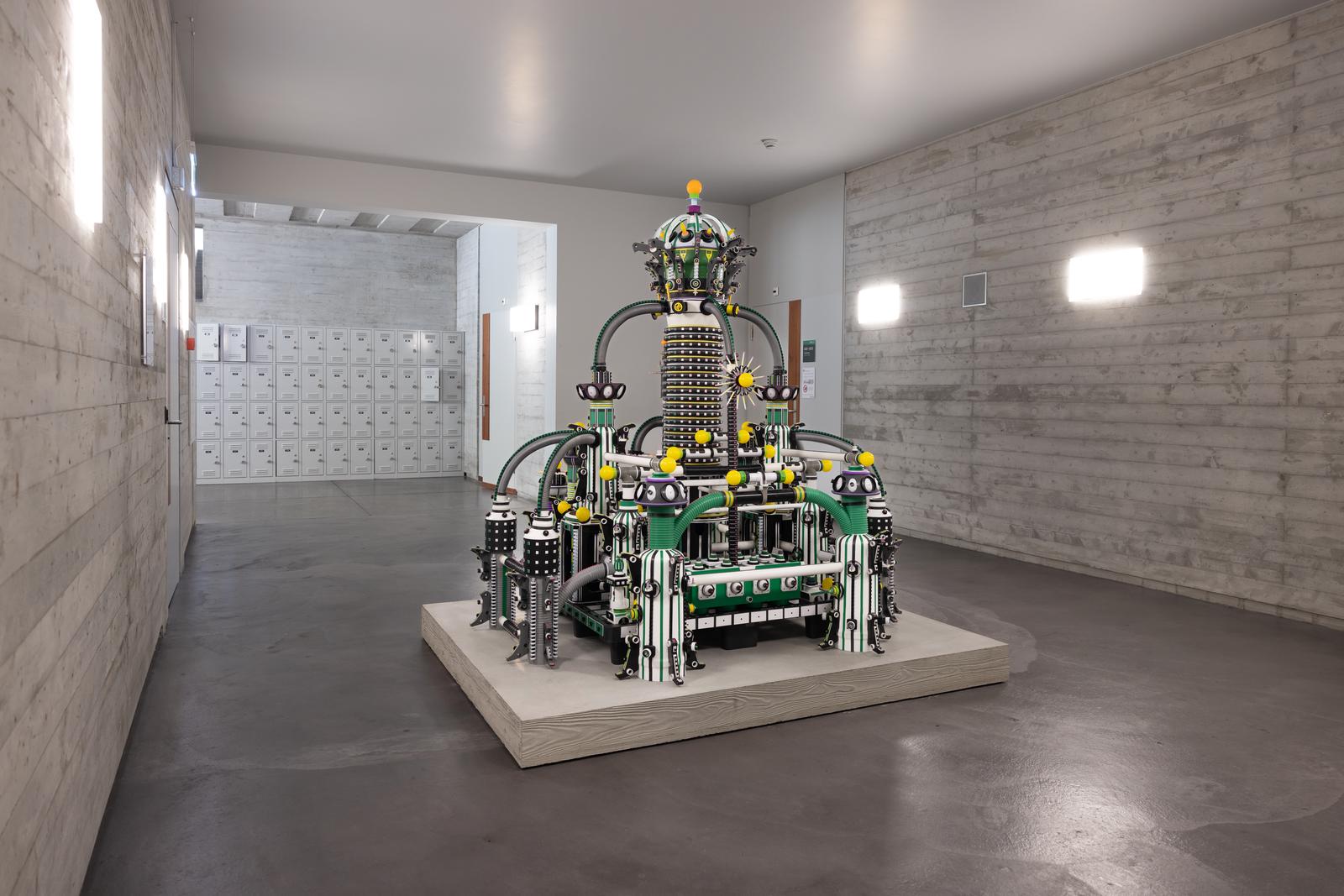For the 125th Year Anniversary of the University of St.Gallen, Switzerland, Davidson made the St.Gallen Clicker, comprised solely of plastic he found within the university. The title Clicker derives from the sound of different pieces of plastic moving and fitting together.
Following the Vernissage, the Clicker has become a part of the University’s renowned permanent collection, alongside the likes of Gerhard Richter, Alberto Giacometti, Hans Arp, Georges Braque, Alexander Calder, Alicia Penalba, Teresa Hubbard & Alexander Birchler, Martin Disler, Joan Miró and Roman Signer. The works are sited within the university grounds and buildings, designed by Architects Förderer, Otto & Zwimpfer, Bruno Gerosa, Sou Fujimoto and Lauener + Baer.
Throughout the course of 2023, on multiple trips to St. Gallen Davidson collected plastic from members of the university community and their different departments. A pager from the Presidents office, broken keypads from IT and piping from the Janitor’s basement. Some pieces were recognisable, but others were unfamiliar; invisible yet ubiquitous and indispensable within the everyday fabric and function of the university; from the filters of taps to strip light holder brackets. With each moment of collection there was a conversation and a meeting with an individual or team and the process of collecting material became completely intertwined with social interactions and stories. He began to see the search for plastic as a form of divining rod that led him throughout the entire social network of the university.
Davidson brought the collected plastic back to my studio in London by hand, in a suitcase. Sorting through the pieces in the studio, he forgot about their purpose and significance within the hierarchy of the University. Instead he became consumed by the sculptural qualities they held and their potential to shape and guide the making of the Clicker. Working intuitively with the plastic, Davidson didn’t begin with a drawing, or an idea. Instead he followed the pieces, how they connected to each other and the qualities these connections imbued as a whole. Cutting, fitting and joining components by hand, he saw each piece of plastic as a word, and the analogue process of assemblage became akin to writing a network of sentences.
Through the process of re-assembling Davidson attempted to take familiar components and present them to the community as a new, unfamiliar whole. The finished St.Gallen Clicker takes on the designed and architectural qualities of engines, factories and cities. Its scale and purpose slips between our pre-existing points of association and recognition. Embellished with detail and bound together by colour and symmetry, it speaks the language of industry, graphic design and religion. Sitting still and latent in the bowels of the university, the work does not provide a singular answer or point of recognition to what it becomes, but maintains an open presence and question of what it can be.
With each piece of plastic holding its own purpose, value and place within the university, as a whole their grouping can be seen to form a material survey of the university at this cur- rent time. The objects Davidson collected did not exist when the university was founded and they will not be the same in 10 years time. In this light, the relationship between the St.Gallen Clicker and its context will change over time. Currently the components seen within the art- work can be also be found within the university. Yet over time a gap will grow. As technology is replaced and developed, the St.Gallen Clicker will become a capsule of material culture from the date it was made.
